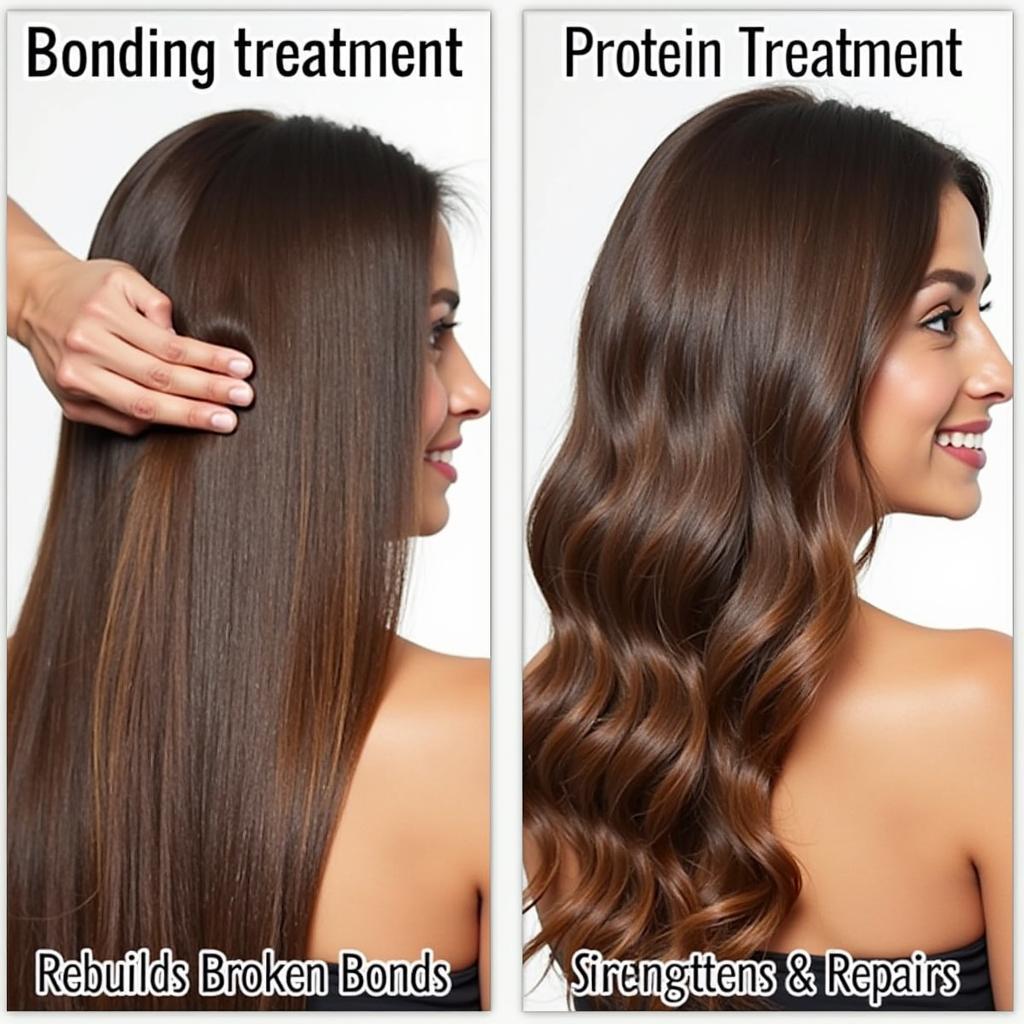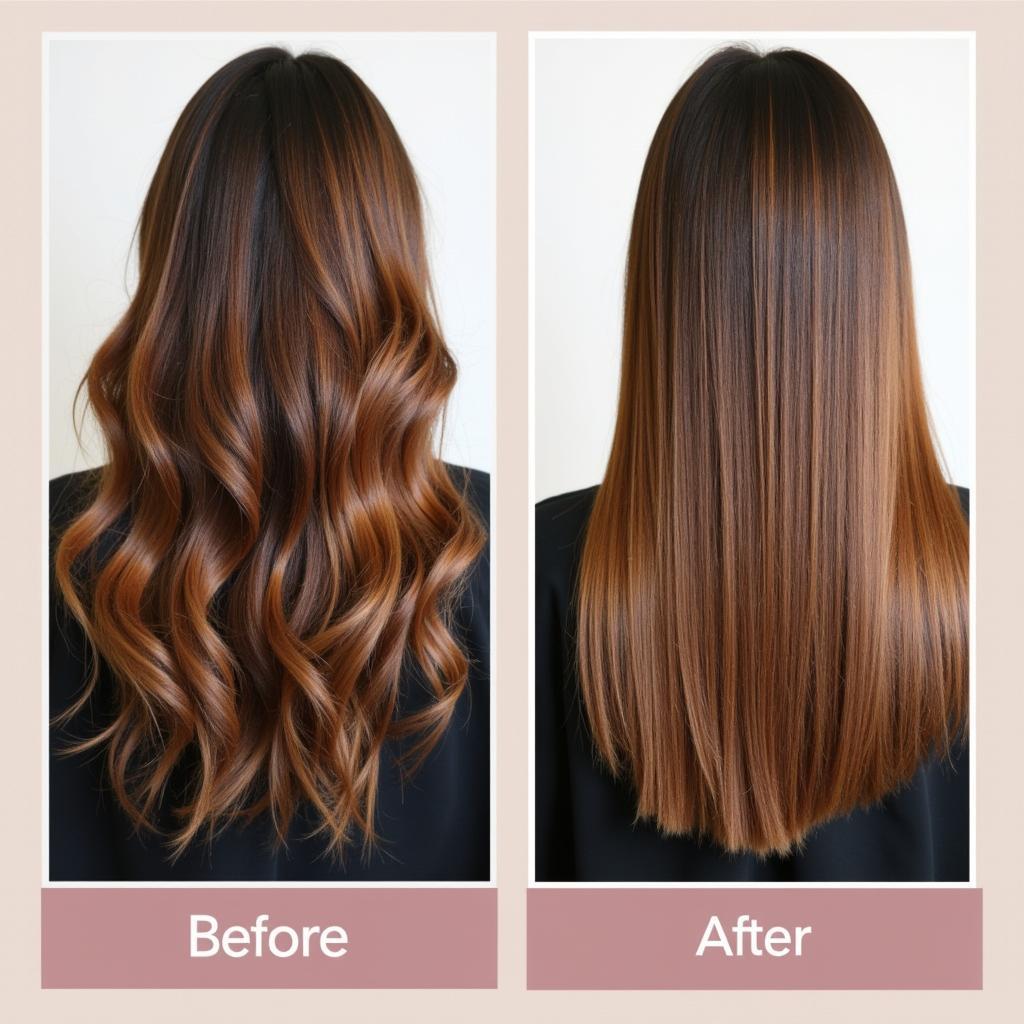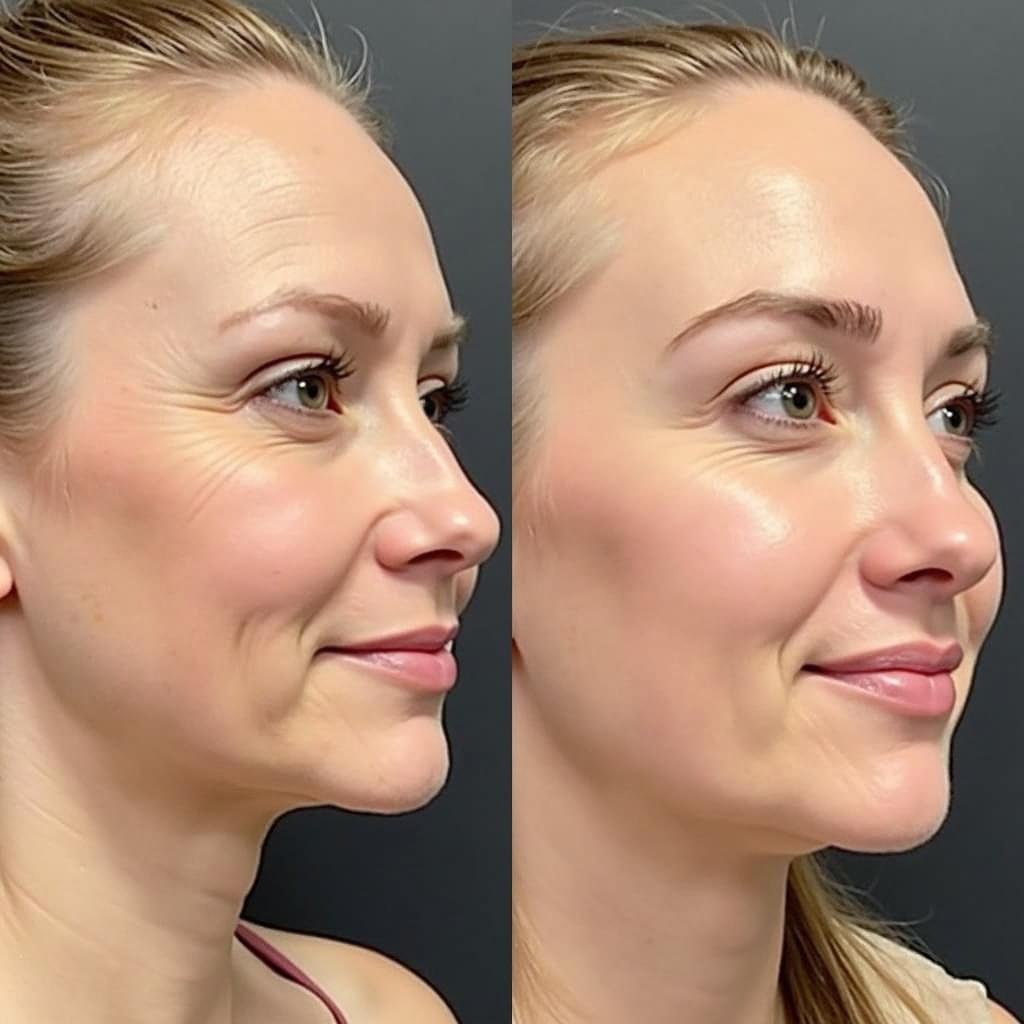
Bonding Treatment vs Protein Treatment: Which is Right for Your Hair?
- AmazoniaSilva
- Tháng 1 20, 2025
- Zodiac signs
- 0 Comments
Bonding and protein treatments are both popular hair care solutions designed to improve hair health and appearance. But what’s the difference, and which one do you really need? This article will delve into the nuances of Bonding Treatment Vs Protein Treatment, helping you determine the best choice for your specific hair needs.
Understanding the Difference: Bonding vs. Protein
 Bonding Treatment vs. Protein Treatment: A visual comparison of the two treatments, highlighting the differences in application and results.
Bonding Treatment vs. Protein Treatment: A visual comparison of the two treatments, highlighting the differences in application and results.
While both treatments aim to improve hair health, they address different issues. Bonding treatments focus on repairing broken disulfide bonds within the hair shaft, which are crucial for hair strength and structure. These bonds can be damaged by chemical processes like bleaching, coloring, or perming, as well as heat styling and environmental factors. Protein treatments, on the other hand, work by adding protein to the hair cuticle, strengthening and repairing damaged areas, and improving overall hair health and appearance. They address issues such as breakage, dryness, and frizz.
What is a Bonding Treatment?
Bonding treatments work at a molecular level to rebuild the internal structure of the hair. They essentially “glue” the broken disulfide bonds back together, restoring strength, elasticity, and resilience. This makes them particularly effective for hair that has been significantly damaged by chemical processing.
What is a Protein Treatment?
Protein treatments work by filling in gaps and cracks in the hair cuticle with protein. This reinforces the hair shaft, making it stronger, smoother, and less prone to breakage. Protein treatments can benefit various hair types, from fine and limp hair to thick and coarse hair.
Which Treatment Do You Need?
Choosing between a bonding treatment vs protein treatment depends on your hair’s condition and the type of damage it has sustained.
-
For chemically damaged hair: If your hair is brittle, weak, and overly processed from bleaching, coloring, or perming, a bonding treatment is likely the best option. It will address the underlying structural damage. You can explore more options on our page discussing bond smoother for hair.
-
For general hair health and strengthening: If your hair is dry, frizzy, or prone to breakage but hasn’t undergone significant chemical processing, a protein treatment can provide the necessary reinforcement and improve its overall condition.
-
For maintaining healthy hair: Both bonding and protein treatments can be used as preventative measures to maintain hair health and protect against future damage.
 Before and after images showcasing the effects of bonding and protein treatments on damaged hair.
Before and after images showcasing the effects of bonding and protein treatments on damaged hair.
Combining Bonding and Protein Treatments
In some cases, combining both treatments can provide optimal results. For instance, if your hair is both chemically damaged and protein deficient, you might benefit from a bonding treatment followed by a protein treatment to rebuild the internal structure and then reinforce the outer layer.
Bonding Treatment vs Protein Treatment: A Quick Comparison
| Feature | Bonding Treatment | Protein Treatment |
|---|---|---|
| Target Issue | Broken disulfide bonds | Damaged cuticle, protein deficiency |
| Best for | Chemically damaged hair | Dry, brittle, or weak hair |
| Results | Restores strength, elasticity, and resilience | Strengthens, smooths, and reduces breakage |
Expert Insights
“Bonding treatments are a game-changer for severely damaged hair,” says renowned hair stylist, Emily Carter. “They can literally resurrect hair that would otherwise be beyond repair.”
Dr. Sarah Chen, a leading trichologist, adds, “Protein treatments are essential for maintaining healthy hair, especially for those with fine or fragile hair prone to breakage. They provide the building blocks for strong, resilient hair.”
Conclusion
Understanding the difference between bonding treatment vs protein treatment is key to achieving healthy, beautiful hair. By choosing the right treatment for your specific needs, you can restore damaged hair and maintain its strength and vitality. Both treatments can contribute significantly to the overall health and appearance of your hair, leaving it looking and feeling its best. You can also check out a comparison between two hair product brands, redken vs nexxus, to explore further options.
FAQs
-
How often should I get a bonding treatment? This depends on the severity of the damage and your hair care routine. Consult a professional stylist for personalized recommendations.
-
Can I do a protein treatment at home? Yes, many protein treatments are available for at-home use.
-
Will a protein treatment make my hair stiff? Using the right product for your hair type and following instructions carefully can prevent stiffness.
-
How long do the results of a bonding treatment last? With proper care, the results can last several weeks or even months.
-
Can I color my hair after a bonding treatment? It’s best to consult your stylist for advice on coloring after a bonding treatment.
-
Are bonding treatments suitable for all hair types? While generally safe, it’s crucial to consult with a stylist to determine if a bonding treatment is right for your specific hair type and condition.
-
What are some signs my hair needs a protein treatment? Increased breakage, dryness, frizz, and a lack of elasticity can indicate a need for a protein treatment.
Have More Questions?
For any additional support or inquiries regarding hair care and treatments, feel free to reach out to us.
Contact Us:
Email: [email protected]
Address: Fifth Avenue, 34th Floor, New York, NY 10118, USA.
Our customer service team is available 24/7 to assist you.

